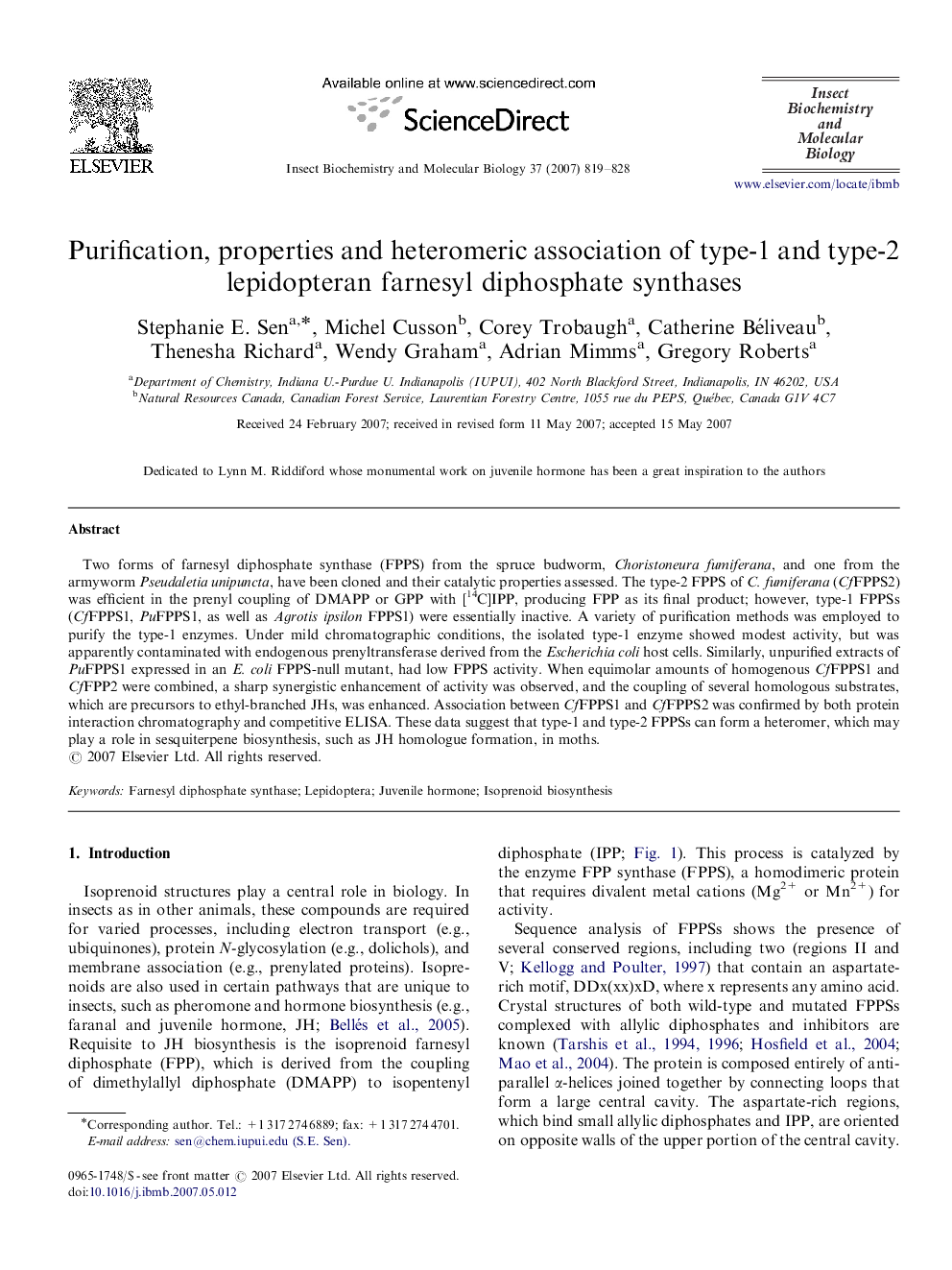| Article ID | Journal | Published Year | Pages | File Type |
|---|---|---|---|---|
| 1982992 | Insect Biochemistry and Molecular Biology | 2007 | 10 Pages |
Two forms of farnesyl diphosphate synthase (FPPS) from the spruce budworm, Choristoneura fumiferana, and one from the armyworm Pseudaletia unipuncta, have been cloned and their catalytic properties assessed. The type-2 FPPS of C. fumiferana (CfFPPS2) was efficient in the prenyl coupling of DMAPP or GPP with [14C]IPP, producing FPP as its final product; however, type-1 FPPSs (CfFPPS1, PuFPPS1, as well as Agrotis ipsilon FPPS1) were essentially inactive. A variety of purification methods was employed to purify the type-1 enzymes. Under mild chromatographic conditions, the isolated type-1 enzyme showed modest activity, but was apparently contaminated with endogenous prenyltransferase derived from the Escherichia coli host cells. Similarly, unpurified extracts of PuFPPS1 expressed in an E. coli FPPS-null mutant, had low FPPS activity. When equimolar amounts of homogenous CfFPPS1 and CfFPP2 were combined, a sharp synergistic enhancement of activity was observed, and the coupling of several homologous substrates, which are precursors to ethyl-branched JHs, was enhanced. Association between CfFPPS1 and CfFPPS2 was confirmed by both protein interaction chromatography and competitive ELISA. These data suggest that type-1 and type-2 FPPSs can form a heteromer, which may play a role in sesquiterpene biosynthesis, such as JH homologue formation, in moths.
